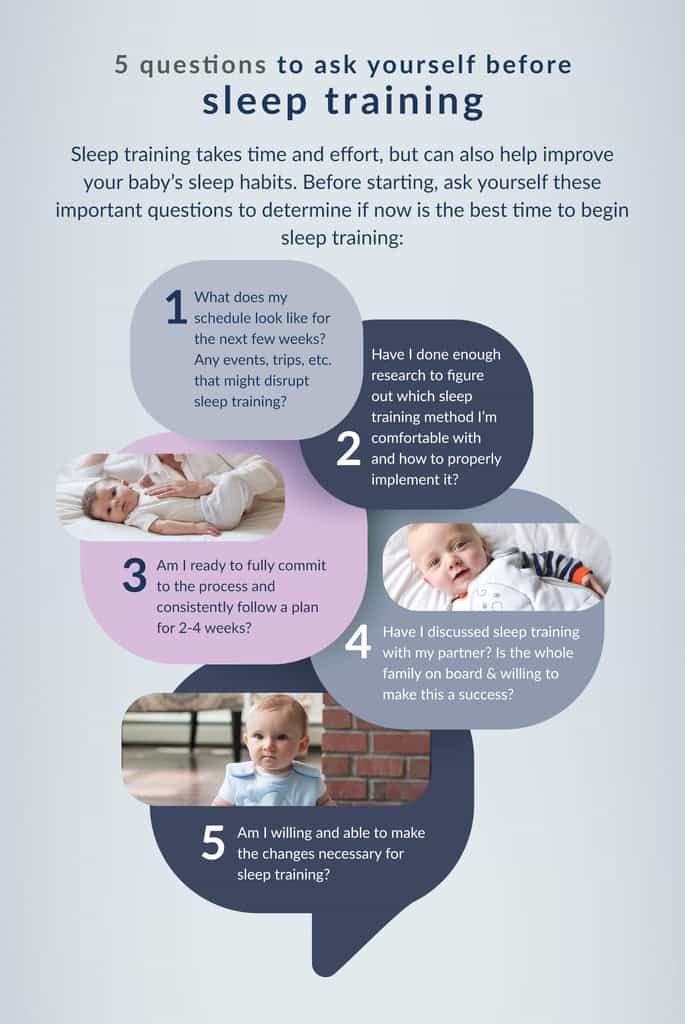The Go-To Guide for 3-Month-Old Sleep Training Successfully
Hey there, super-parents! ? Are you ready to embark on the wonderful journey that is sleep training your 3-month-old bundle of joy? If you’re reading this, I bet you’re eager to learn the magical art of baby sleep! Rest easy, because you’re in the right place! By the end of this guide, you’ll have all the secrets to a peaceful night’s sleep—for both your baby and you. Ready, set, snooze! ?
Understanding Sleep Patterns at 3 Months
First things first, let’s understand what’s going on in that adorable little head. At 3 months old, your baby’s sleep patterns are starting to develop into a more predictable rhythm. It’s the perfect time to lay the groundwork for good sleeping habits.
How Much Sleep Does a 3-Month-Old Need?
On average, your 3-month-old dynamo will need about 14 to 17 hours of shut-eye in a 24-hour period. They’re growing at incredible speeds, and sleep is when a lot of this growth and development happens. Who knew that snoozing could be so productive, right?
Establishing a Sleep Schedule
Consistency is key! As you introduce sleep training, the goal is to create a soothing environment that signals to your little one that it’s time for night-night. This involves both a steadfast routine and a heart full of patience.
Creating a Bedtime Routine
Start with a calming bedtime routine that you can consistently follow. Maybe it’s a warm bath, followed by a snuggly storytime or lullabies. These activities can work wonders in telling your baby’s brain to start winding down.
Bedtime Timing
Timing is everything! Aim to put your wee one down when they are sleepy but still awake. This helps them learn to fall asleep independently—a skill that’s golden for both you and your mini-me.
Tackling the Nighttime Feedings
At this young age, your baby will likely still need to wake for feedings during the night. Don’t worry, that’s perfectly normal! But, you can begin to gently stretch those intervals, allowing your baby to slowly adapt to longer stretches of sleep.
Mastering the Environment
A sleep-conducive environment is like the magic wand of your sleep training toolkit. Dim lights, white noise, and a comfortable room temperature can set the scene for some Zzz’s.
Room Sharing but Not Bed Sharing
Experts suggest room sharing—keeping baby’s sleep space in the same room where you sleep—but avoiding bed sharing. It keeps your cutie pie close for feedings and monitoring while also promoting safer sleep habits.
Keeping Daytime Active
Make sure your baby has enough playtime and interaction during the day. Sunshine and physical activity can contribute to better sleep at night, just like for adults!
Sleep Training Methods
When you feel the time is right, there are several sleep training methods you can try with your little one. Whether you’re more comfortable with a gentle approach or something more structured, there’s a technique out there for every family.
Gradual Methods
The ‘no tears’ method or ‘pick up, put down’ method can be gentle ways to help your baby learn to self-soothe without the tears. It involves comforting your baby to the point of drowsiness but encouraging them to actually fall asleep in their crib or bassinet.
More Structured Techniques
For those who prefer a more structured approach, methods like ‘controlled crying’ or ‘Ferberizing’ might resonate. These involve following a specific set of protocols to help your baby self-soothe and fall asleep without immediate comfort from you.
There we have it—a sneak peek into the harmonious world of 3-month-old sleep training! Navigating this journey isn’t just about helping your cutie get enough winks; it’s also about giving you the rest you deserve. Stay tuned for more detailed, pillow-soft strategies in our upcoming sections! ??

Five Things Parents Should Know Before Embarking on 3-Month-Old Sleep Training
1. Recognize the Signs of Readiness
Before diving into sleep training, it’s crucial to look for signs that your 3-month-old is ready. These include falling into more predictable sleep patterns and being able to sleep longer stretches at night. Babies at this age might also start to develop self-soothing techniques, like sucking on their thumb or a pacifier.
2. Understanding Sleep Cycles
Sleep isn’t just an off-and-on switch. It involves cycles of deep and light sleep. Newborns typically don’t enter the deeper stages of sleep as adults do, but by 3 months, they begin transitioning into these stages. Realizing this will help you set realistic goals for your little one’s sleep training journey.
3. Adjusting Expectations
It’s normal to fantasize about your baby sleeping through the night. However, do adjust expectations in line with developmental milestones. Sleep training doesn’t mean your baby will suddenly clock eight uninterrupted hours of sleep—it’s more about establishing a healthy sleep routine.
4. The Importance of Daytime Naps
Daytime sleep is just as crucial as nighttime slumber. Well-rested babies are more likely to sleep better at night. Ensure your baby gets adequate nap times during the day, based on their sleep needs. Over or under-tired babies may have more difficulty falling and staying asleep at night.
5. Safety Comes First
Safety should always be a priority. This means following guidelines for safe sleep to reduce the risks of Sudden Infant Death Syndrome (SIDS). Ensuring the crib or bassinet is bare, apart from a well-fitted mattress and sheet, and keeping baby on their back to sleep, are some of the critical steps to remember.
Implementing the Right Tools and Techniques
Equipping yourself with the right tools and techniques for 3-month-old sleep training can create a smoother process for you and your baby. Sticking to the bedtime routine, using appropriate sleep associations, and understanding that there will be good and tough nights, are all part of a successful sleep training journey.
Navigating Setbacks and Progress
Like any new skill, sleep training might come with a few setbacks. Growth spurts, teething, or illnesses can disturb your baby’s sleep routine. It’s essential to be flexible and adjust your methods as needed. Don’t be discouraged by a few tough nights; progress is often just around the corner.
As we cocoon into this snug world of sleep training, it’s all about fostering habits that both you and your tiny dreamer can stick to. You are your baby’s best teacher, and with a sprinkle of persistence and a whole lot of love, you’ll both be on your way to dreamland. Stay persistent, patient, and positive, and those restful nights will soon unfold like a soft, lullaby-filled blanket. Sweet dreams, sleep champions! ???
See more great Things to Do with Kids in New Zealand here. For more information see here
Disclaimer
The articles available via our website provide general information only and we strongly urge readers to exercise caution and conduct their own thorough research and fact-checking. The information presented should not be taken as absolute truth, and, to the maximum extent permitted by law, we will not be held liable for any inaccuracies or errors in the content. It is essential for individuals to independently verify and validate the information before making any decisions or taking any actions based on the articles.




